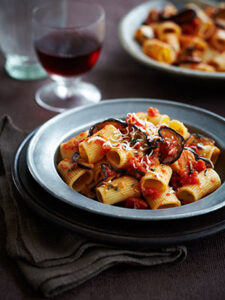
Cottage pie is a classic, warming, easy to make British dish. Cottage pie is a pretty hearty fayre of minced beef and potatoes, brought together through a gorgeous thick gravy and topped with crispy grated cheese.This may not be the definitive recipe, but it's my own and what I find most enjoyable – but as always there is some flexibility. The peas and carrots are optional (I only add the peas!), and some people add celery too. Some purists also insist that adding tomato puree is not traditional, but in its (my!) defence I think it thickens the gravy further and adds a touch of sweetness to its flavour too.Also, I did do a quick comparison of recipes after writing, and some people cook the cottage pie in the oven for much longer – some up to an hour and a half — but I reason that as everything is cooked before it goes in the oven, you are really just after combining the two halves over heat. The arguments about slow cooked meat are true with some dishes, but I can be inpatient and I don't see the value in slow cooking beef mince and waiting another hour longer without good reason!
Prep Time 15 minutes mins
Cook Time 1 hour hr
Total Time 1 hour hr 30 minutes mins
Course Main Course
Cuisine British
Servings 4
Ingredients
- 500 g beef (minced)
- 400 ml beef stock
- 2 onions (diced)
- 1 carrot (diced; optional)
- 150 g peas (optional)
- 2 bay leaves
- 2 tbsp worchester sauce
- 1 tbsp tomato puree
- 1 tbsp olive oil
- 1 tbsp cornflour (optional)
for the mash
- 1¼ kg floury potatoes
- ½ cup crème fraiche or milk (optional)
- 50 g grated cheese
- 25 g butter
- salt & black pepper
Instructions
Preparation
- Use the butter to line an ovenproof dish that the pie will be created in. I use a rectangular stoneware dish; the same one I also use to make crumbles and lasagne in – its about 6cm/2½ deep.
Method
- Peel the potatoes, cut them into equal sized chunks and cook until soft in a pan of water. This should take about 20 minutes or until a fork passes into the potato easily.
- In a pan add the olive oil and brown the mince – then remove it and set it aside.
- Add the onions and carrots (If using) to the pan and cook in the oil/fat until they soften.
- Add the beef mince back to the pan, along with the; worcester sauce, tomato puree, peas, beef stock, cornflour, bay leaves and a pinch of salt and pepper. Simmer at a medium heat for about 20 minutes – or until the gravy has reduced down and thickened. The cornflour is used to thicken the mince, if you don't have any, you can continue without, reduce it for longer, or add a little plain flour.
- Remove the bay leaf, and spoon the mixture into a pie dish – I generally try to keep the ratio of potatoes to beef mixture about 60/40. Pour over the gravy and let the mixture cool whilst you perform the next step – it makes the job of adding the top layer of mash much easier!
- When the potatoes are cooked, drain the water and mash them until smooth – adding the creme fraiche/milk/butter a little at a time. I used a knob of butter and half a cup of milk in the mash, it does look too wet to start off, but as you mash the potatoes through it, it soon thickens to a smooth mash!
- Preheat your oven to 180ºC/350°F or Gas Mark 4.
- Once the mash is ready gently spoon it on top of the beef mince mixture, the depth of mash should be little greater than the mixture – around 2-4cm or 1-2in in my case. Smooth the mash over the mixture and level it before scoring it with a fork.
- Place in the top shelf of the pre-heated oven for 35 minutes.
- After 35 minutes in the oven remove the dish and sprinkle over some grated cheese (I used white cheddar, but Parmesan works well too. Place the dish back in the oven and cook under the grill until the cheese turns golden.
- Remove from the oven, season with some freshly ground pepper and let it rest a little – but still serve hot. The short rest will help the gravy thicken and make the dish easier to serve.





